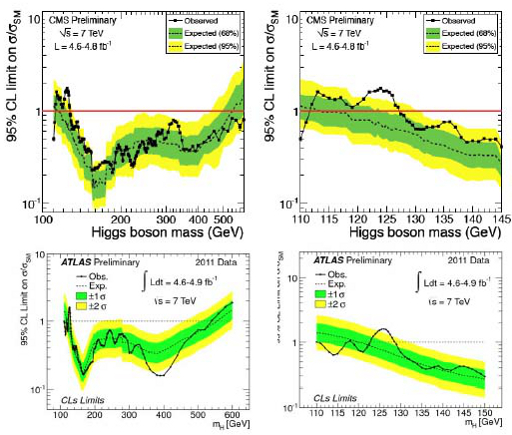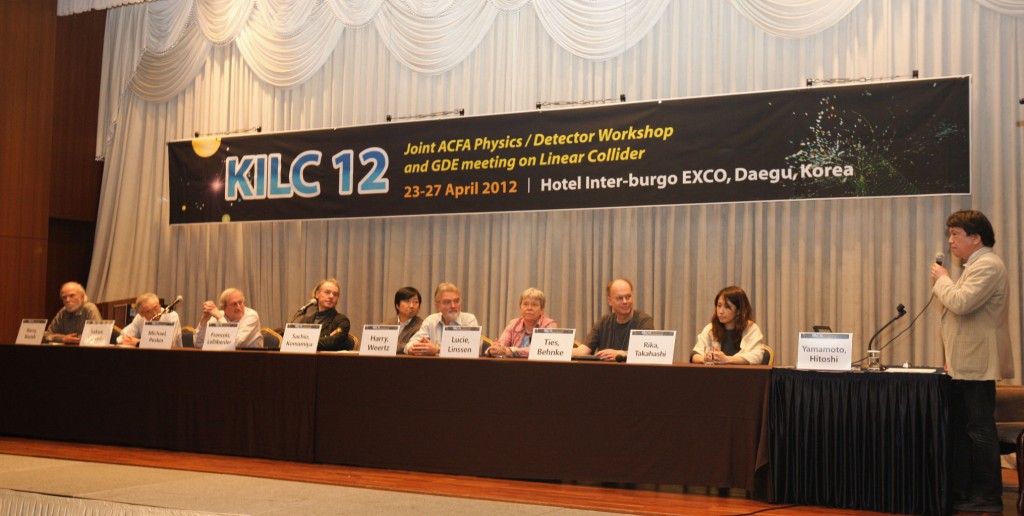A first panel discussion on what will be required to provide scientific justification for the International Linear Collider was held at the LCSW11 workshop in Granada, Spain, in September 2011. That lively discussion could be characterised by expressions of a broad set of opinions, but most of the panelists and audience stated that if the Higgs is discovered at the Large Hadron Collider (LHC), this will provide sufficient scientific justification for the ILC project. Since Granada, more results from the LHC have been presented and there are both growing hints for a Higgs boson at around 125 gigaelectronvolts (GeV) and more stringent limits on supersymmetry. At the KILC12 workshop in Daegu, Korea, this past April, there was a lively follow-up panel discussion. The panel consisted of a cross-section of workshop attendees: accelerator physicists, detector experts, theorists and even one of our communicators. The Daegu panel produced areas of agreement, some differences and homework.
Hitoshi Yamamoto, Tohoku University, organised and chaired the Daegu panel discussion. Before the panel met, he sent around an email defining the discussion: “The topic is the mandate of the ILC – what justifies the ILC? – One specific question is ‘If Higgs is found, is it enough for the ILC?’ We would like to separate scientific questions from political questions, but we do not have to ignore the political questions.”

The present results on the search for the Higgs. The upper plots show the results from CMS and the lower plots the independent results from ATLAS. For both experiments, the Standard-Model Higgs boson is excluded with 95% confidence up to a mass of 600 GeV, except for the window 122.5 to 127.5 GeV where there is an “interesting fluctuation” around masses of about 125 GeV.
The question of whether the Higgs will provide enough justification is an interesting one in anticipation of a discovery that has not yet been made. The panelists and audience expressed many different points of view in response to this question. A point made by several panelists was that the Higgs is completely different from any other particle we have seen. It couples to mass, and understanding this phenomena will require detailed studies only possible through electron-positron annihilations. On the other hand, the point was also made that we must first undertake to understand what the LHC will be able to learn about the Higgs, beyond discovering its existence. This is especially important, considering the long period of time, including upgrades, the LHC will have to study the Higgs.
Other important points came out in the discussion. Even if the physics potential of the ILC is justified by the discovery of the Higgs, should we wait for information on other new physics opened up by the LHC, or should we propose to build a machine to study the Higgs, but upgradeable to higher energy at a later time, perhaps even to energies requiring a different technology, like the CLIC option being pursued at CERN?
Such panel discussions are stimulating and fun, but even more importantly, they can play an important role in focusing us on real questions. In this case, it is the question of what will be required scientifically to justify the ILC. One concrete result of the Daegu panel discussion at KILC12 was that it made it evident that if the Higgs is discovered at LHC, we must have performed serious studies to understand what kind of follow-on physics will be possible with LHC and which Higgs characteristics will require an ILC.



Recent Comments